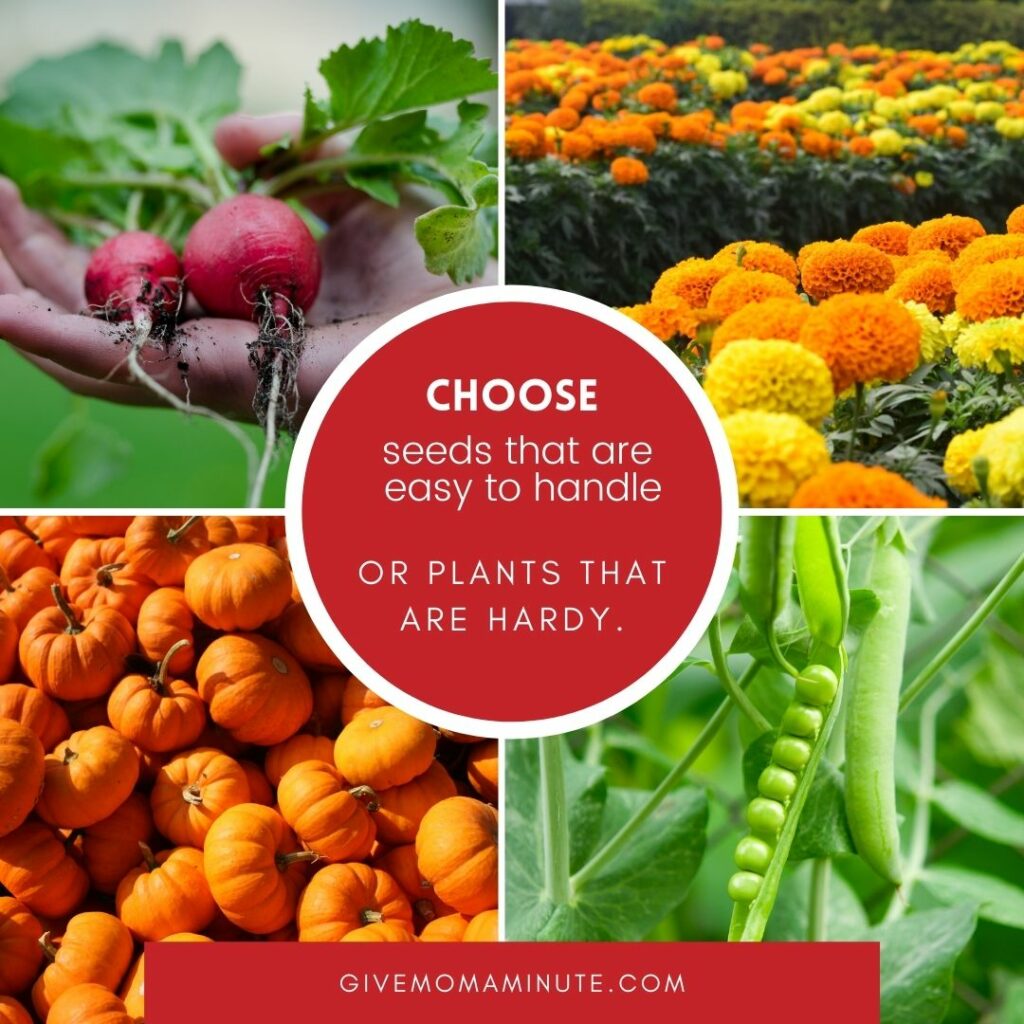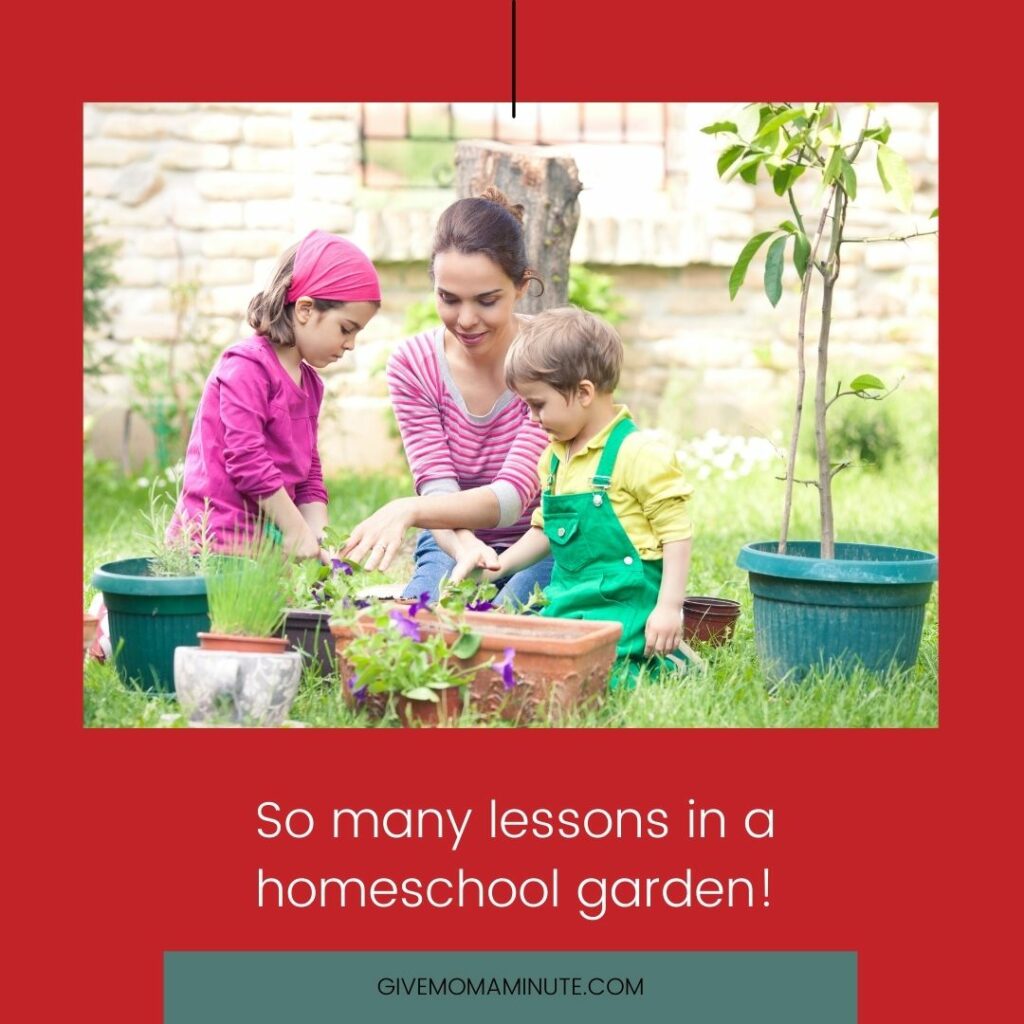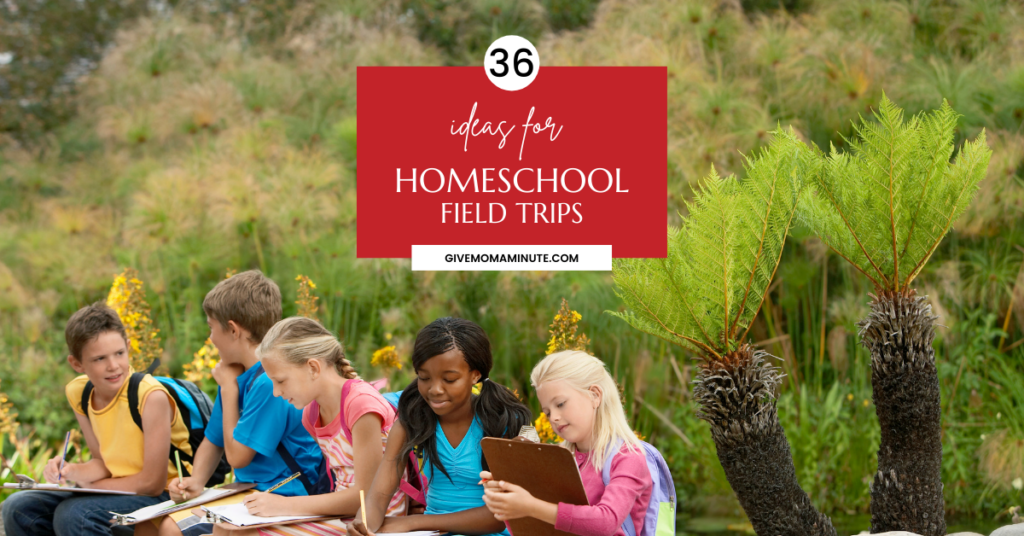It’s that time of year when we homeschooling mamas begin thinking the grass is greener on the other side, right? One way to get through the end days of winter is gardening activities with kids. When my kids were toddlers I used to pull out all the seed catalogs. The kids could collage their dream gardens. Now that they are a little older, gardening can be one of our fun homeschooling activities.

Gardening Activities for Kids as a Fun Homeschool Project
Gardening is an interesting and therapeutic endeavor for anyone. When you teach your kids the gardening process as a homeschool project, it turns into a fun family event. Gardening can provide educational material from spring to autumn. Whether you are looking for preschool gardening activities or an actual horticulture homeschool curriculum, you will have everything you need to plan your garden ideas for kids.
Kids love to play outside and want to discover the world around them. Teaching kids how to grow and nurture a garden will help them to eat healthier later on in life. Preschoolers to high schoolers will love seeing their hard work pay off in the garden.
How Should I Plan A Kids’ Garden Project?
First, sit back and really think about the size of your gardening area. If you have a big backyard, you might say the yard’s the limit. For most of us, though, the homeschool gardening project will be more limited. If you have a smaller space or no yard you might want to consider container gardening. Many cities also offer plots in community gardens for an affordable fee.
When thinking about gardening activities for kids, take the ages of your children into consideration. For a preschooler’s garden, you will want to focus on a few quick-growing varieties. This will keep the kids from growing(pun intended, ha!) impatient. If your kids are older, focus more on plants and vegetables they will enjoy. You can usually find gardening kits on Amazon but also shop around at garage sales and thrift stores.
Regardless of their ages, always make sure your plants are able to thrive in your growing zone and soil type. For older kids I would let them do the research on how to amend the soil, watering needs, and sunshine requirements. Your local extension office will be a helpful resource if you are unsure.

Once you have determined the size of your garden and what to put in it, let your child help you with the final decisions. Start off with items the kids are excited about. Spinach is fast-growing but not get them super excited. Gardening activities for kids should include the kids in the decision-making process. It is better to get their feedback and help them feel invested in the process from the beginning. Let them pick vegetables or flowers they will actually eat or enjoy. Then you can always try something new “just for fun”. If you have a seed swap or heritage gardening club nearby, see if you can acquire a few heirloom seeds or plants. While you’re waiting for your produce to grow check out some books with recipes or garden activities for kids to get inspiration.
This Gardening For Kids Journal can take the whole family through the planning process for your homeschool garden. You will also have a fun way to document your hard work.
What are the best plants for a Kids’ Gardening Project?
Small hands will do better with bigger seeds. The following small list is a guide to bigger seeds that grow fast and will keep your child’s interest longer. These plants grow faster and produce fruits (or seeds, in the case of the sunflowers) fairly quickly and consistently throughout the growing season. Guiding your children towards easier starter plants will bring more satisfaction in your first growing season.
- Sunflowers will help bring bees and birds to your garden. These pollinators are an integral part of the gardening process. Sunflowers come in several sizes and color combinations. I’m a big fan of the Mammoth Sunflowers but make sure you have space for them! Most people will plant sunflowers next to your house or on the edge of the garden as a border. Once the growing season is finished you can save the heads of seeds and roast them/eat them yourself (check your variety) or use them as natural bird feeders in the winter.
- Pole beans and snap peas are another great starter for children as they grow heartily and quickly. When you harvest them, they will grow more beans, allowing you to have a supply throughout the growing season. If you are short on space or just don’t want to mess with a trellis, there are bush varieties available for both. Peas love colder weather so you can start these earlier in the spring. You can have a second planting in late summer for a fall harvest as well.
- Radishes and marigolds are also great starters as they grow quickly and are hearty plants that can endure some rough handling from little hands while they learn. It isn’t common in the United States, but marigolds are edible. (check your varieties but here is a recipe from the Republic of Georgia that uses dried petals of French marigolds!)
- Zucchini and pumpkins will also have larger seeds. Zucchini will be ready to eat quicker than pumpkins, but both plants come up quite quickly for a little instant gratification.

For older kids I recommend letting them choose the seeds they are interested in. They might like to focus on a salsa garden, a butterfly garden, or a salad garden. Encourage them to plant things they will really eat or flowers they will enjoy arranging. Doing a research project on plants that are native to your area is another way to involve them in the garden design.
If you are starting from seeds, teaching kids how to plant, water, and germinate the seeds is an important first step. They get to watch as the first seedlings appear and will understand the importance of care for each little plant.
Showing your kiddos how to get the soil just right and how to start the seeds off is another rewarding experience. You can easily start with seedling starters from any big box store, but you can also create your own DIY starter kits using egg cartons or other containers. Starting a Homeschool Garden is a great project for everyone in the family when springitis hits!
Where to Buy Seedlings for My Homeschool Garden Project?
Buying seedlings from your local farmer’s market or nursery (Field Trip Ideas Here) is an affordable way to start your young gardener’s experience. These trips are fun homeschool activities and you also have the chance to ask questions and learn from gardening professionals.
You will learn how to amend the soil if necessary and what fertilizers or composts might be most beneficial. When you are choosing seedlings make sure they are hearty. Avoid plants that look yellow, droopy or otherwise unhealthy.
When Should Kids Start Gardening?
While kids of all ages are welcome to help with gardening, there are some basic skills that are important to have (or learn) before digging in. I recommend starting your children around preschool or kindergarten. This is a great age to get kids started and interested in gardening. At this age, kids are willing to help and are absorbing all of the knowledge they can. They also have the motor skills to handle seedlings without demolishing them. If kids are younger than that just keep them nearby and have then help you with tasks such as watering, holding seedlings, etc.
Another fun way to add gardening in to your homeschool curriculum is through a fairy garden. Fairy gardens are whimsical play areas. Your kids can use small knick knacks, characters or other toys to play right alongside the plants. Have fun with this!
When Should we Start Planning our Garden?
While it depends on the gardening zone you live in, most will begin garden preparations in February if you are going to start with seeds. Let your children pick what they want to grow and get the seeds started indoors. Seeds should be started 6-8 weeks before you want to plant them outdoors. This is a great way to teach kids about the germination process and how growing seeds work. Starting from seeds lets you and your child follow the entire lifecycle from seed, to sprout, to flower and finally the fruit.
As the weeks progress, allow your kids to help with pulling weeds and adding mulch to the soil. Most kids will love getting their hands dirty. (Don’t forget to do a little study of all those micro ecosystems with worms, grubs, breakdown of earth, etc!) When it is time to plant the sprouts outside, let them in on that fun, too. Teach them how big of a hole to dig and how to water a seedling for the best results.
Benefits of Gardening Activities for Kids
Children, like adults, love to see the fruits of their labor. Having a homeschool garden will give you hours of lessons that won’t seem like school. Allowing your children in on the process, regardless of their ages, gives them something to feel proud about and maybe even to show off. This is a great time to bond and connect with your children while teaching them a life skill they will have forever. Your children will cherish these homeschool activities you created together digging in the dirt. Have fun and let me know in the comments what you grew!





Pingback: Fun Things To Buy with Charter School Funds - Give Mom a Minute
Pingback: Nature Study Ideas for Spring - Give Mom a Minute